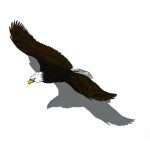By Kaitlyn Fletcher
Photo Credit: John Rawinski
The 2025 State of Birds report raises alarm for birds across every habitat, again. Nearly one-third of America’s bird species need immediate conservation action. About 50% of all bird species found in the U.S. can be spotted in Colorado, which boasts a total of 521 species from 63 different families.
The state of valley birds
Local bird expert John Rawinski has documented 369 bird species in the San Luis Valley as of 2024, adding one to three new species annually. That’s over two-thirds of Colorado’s birds.
Lined by rugged mountains, the desertscape slopes into piñon-juniper and conifer forests before climbing into the alpine tundra of the San Juan and Sangre de Cristo ranges. This distinctive topography fosters a mosaic of habitats, including critical wetlands and riparian habitats.
“Birding in the San Luis Valley is like starting the day in Tucson and ending up in Alaska,’ explains Rawinksi. “And what do I mean by that? You can find Bendire’s Thrashers near Del Norte in the morning, which is comparable to species found around Tucson, Arizona. By afternoon, if you drive up to Grayback Mountain up in the alpine zone, you could be looking at white-tailed ptarmigan, more synonymous with the Arctic North.”
Resident, seasonal and migratory birds can find favorable conditions to feed, rest and breed. Five out of the eight categories in the report are found in the valley. These are arid land birds, grassland birds, western forest birds, waterfowl and shorebirds.
Five birds are labeled as Red Alert species, notably the threatened Gunnison Sage Grouse, with an additional 15 reported as tipping point species, including the Olive-sided Flycatcher and Lesser Yellowlegs. This means that at least 50% of their population was lost over the last 50 years.
Natural navigation
Large enough to be seen from space, the valley is a migration magnet for birds on the Central Flyway. This avian superhighway supports approximately 400 species, including the iconic Sandhill Cranes, and stretches 5,000 miles from the tropics to polar regions within the Americas.
Birds travel hundreds to thousands of miles on minimal reserves. Without the promise of resources and rest, these birds would struggle to reach their final destination.
Using the green band of the Rio Grande as a guide, the migrants head north from the Gulf of Mexico and then skirt the eastern edge of the Rocky Mountains. Some end their journeys here, while others forge on to the north.
Raptors are the dominant winter residents. Come summer, the Rio Grande corridor is essential to songbirds, such as the endangered Southwestern Willow Flycatcher and Yellow-billed Cuckoo. More than 50% of waterfowl migrants pass through the valley on the Central Flyway, along with many shorebirds, such as the Snowy Plover and White-faced Ibis.
Threats to our landscapes
Thanks to decades of conservation, American duck populations rebounded to healthy numbers. This win is now in jeopardy due to the weakening of wetland protections over the past few years.
The valley is home to three national wildlife refuges: Alamosa, Monte Vista and Baca. Monte Vista is the most productive and dense duck breeding ground in North America, exceeding 1,000 nests per square mile, according to Ducks Unlimited.
Grasslands cover 40% of the basin. This group of birds holds the most “tipping point” species due to the national collapse of their habitat. Mountain plovers and Chestnut-collared longspurs are local examples of birds dependent on our grasslands to breed.
Fire suppression and industrial timber management degrade western forests. The migration of the Rufous Hummingbird, another tipping point species, is threatened by these actions in the San Juans. The spruce beetle also decimated the old-growth forests, adding to the threat.
Rawinki explains that climate change and human development are the biggest threats to birds in the valley. Climate change shifted weather patterns and habitats that birds depend upon, while humans continue to encroach on their lands.
“Birds are tremendous monitors of our earth,” said Rawinski. “And if there’s something wrong with birds, you better believe there’s something that humans need to pay attention to.”
How to help our feathered friends
The trumpeting calls of the Sandhill Cranes. The jeweled throats of Broad-tailed Hummingbird. The constant joy from the Mountain Bluebird. Birds in the San Luis Valley are a sensory spectacle.
The ongoing decline in bird populations is not just a loss for bird enthusiasts, but also a sign of environmental degradation. Yet, there is hope. Conservation efforts highlighted in the analysis show that a collective and strategic approach can help restore these populations.


